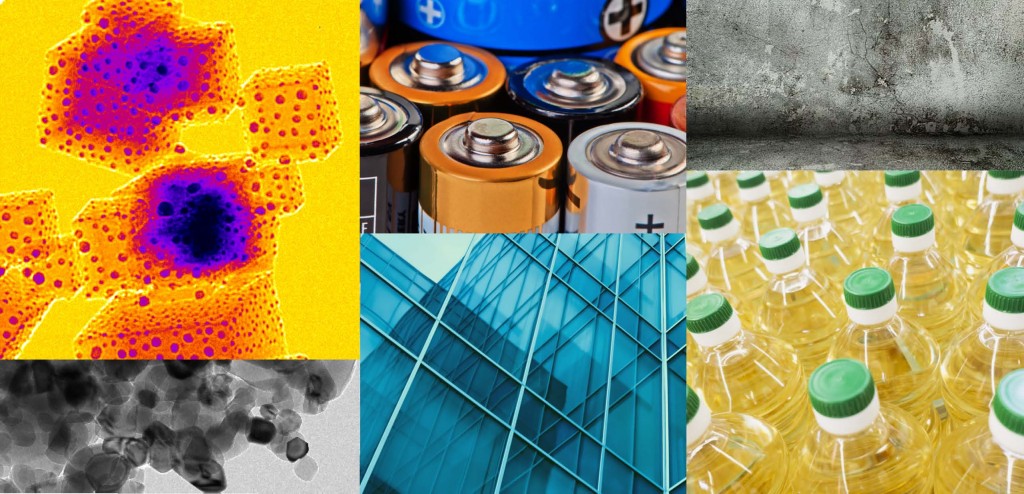
[Images above] Credit: NIST
NANOMATERIALS
A data-driven strategy to explore the magnetism in 2D materials
Researchers proposed a two-step data-driven strategy to explore magnetism in 2D materials: 1) develop a random forest model to separate magnetic and nonmagnetic compounds, and 2) find a mathematical model that uses composition to provide a materials map with defined regions for ferromagnetic and antiferromagnetic 2D materials.
Physicists observe an exotic ‘multiferroic’ state in an atomically thin material
Massachusetts Institute of Technology physicists discovered an exotic “multiferroic” state in a 2D material, the first confirmation that such properties can exist in 2D materials. To create the 2D material, they used hexagonal boron nitride as the bulk foundation and then flowed powders of nickel and iodide over it, resulting in atom-thin flakes of nickel iodide.
ENERGY
Noninvasive approach to estimating lithium-ion battery degradation
Researchers from Gwangju Institute of Science and Technology designed an alternative approach to the cumbersome IC-DV technique and have characterized the degradation modes by cycling graphite/LiNi0.5Mn0.3Co0.2O2 (NMC532) pouch cells with two different capacities at low and high C-rates.
Researchers develop 3D imaging technique to understand how dendrites form in batteries
University of Houston researchers developed a novel in-situ 3D microscopy to image and study the localized electrochemical environments and understand where dendrites start forming in batteries.
‘Workhorse’ of photovoltaics in tandem with perovskite
Two teams from Helmholtz-Zentrum Berlin and the Institute for Solar Energy Research succeeded in combining a perovskite top cell with a so-called PERC/POLO silicon cell to form a tandem device. PERC silicon cells on p-type silicon are the “workhorse” of photovoltaics, with a market share of about 50% of all solar cells produced worldwide.
Improved fuel cell performance using semiconductor manufacturing technology
Researchers at the Korea Institute of Science and Technology synthesized metal nanoparticles by a physical rather than chemical method using a sputtering technique typically used in semiconductor manufacturing.
BIOMATERIALS
‘Seeing’ nonuniformities in 2D materials may lead to new medical sensors
Researchers with the 2D Crystal Consortium at Penn State developed a novel and better approach at detecting nonuniformities in the optical properties of 2D materials, which could lead to steps for solving various health care challenges.
Antibacterial bioactive glass doubles down on microbial resistance to antibiotics
Aston University researchers found a way to significantly increase the antimicrobial properties of bioactive glass by combining pairs of metal oxides in the glass. They found some combinations were more than 100 times better at killing bacteria than using single oxides alone.
ENVIRONMENT
Perfecting the EV battery recycling process
Researchers from Chalmers University of Technology, Sweden, outline an optimized recycling process for electric vehicle batteries in a new article. A key finding of the new study was that the hydrometallurgical process can be carried out at room temperature.
MANUFACTURING
A laser-quick and nondestructive method to detect cracks in concrete structures
Researchers from Shibaura Institute of Technology and the National Institutes for Quantum Science and Technology, Japan, tested the effectiveness of laser-induced plasma shock wave excitation at detecting cracks in concrete structures. They successfully detected defects and determined the location of the approximate boundary.
Researchers develop design scheme for fiber reinforced composites
Researchers from the Gwangju Institute of Science and Technology in Korea developed a scheme for AI-assisted design of fiber reinforced composite structures with spatially varying optimal fiber sizes, making fiber reinforced composites more lightweight without compromising their mechanical strength and stiffness.
Researchers establish first-of-its-kind framework to diagnose 3D printing errors
Researchers co-led by The Pennsylvania State University created a first-of-its-kind methodology for diagnosing 3D printing errors with machine learning in real time.
OTHER STORIES
Development of a diamond transistor with high hole mobility
Using a new fabrication technique, engineers at the National Institute for Materials Science, Japan, developed a diamond field-effect transistor with high hole mobility, which allows reduced conduction loss and higher operational speed. This new transistor also exhibits normally-off behavior, a feature that makes electronic devices safer.
Surprising semiconductor properties revealed with innovative new method
Pacific Northwest National Laboratory researchers probed the properties of a semiconductor combined with a novel thin oxide film and observed a surprising new source of conductivity from oxygen atoms trapped inside.
Researchers at the Massachusetts Institute of Technology showed how one could improve the efficiency of scintillators by at least tenfold—perhaps even a hundredfold—by changing the material’s surface to create certain nanoscale configurations, such as arrays of wave-like ridges.
Inorganic borophene liquid crystals: A superior new material for optoelectronic devices
Researchers at Tokyo Institute of Technology investigated a liquid-state borophene oxide, discovering that it exhibited high thermal stability and optical switching behavior even at low voltages.
ACerS Fellow and Penn State professor John Mauro will give a free webinar on some future advances in glass and technology that promise to address global challenges in energy, the environment, healthcare, information and communication technology, and more. The webinar takes place March 22 from 12–1 p.m. Eastern.
